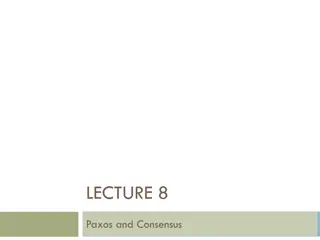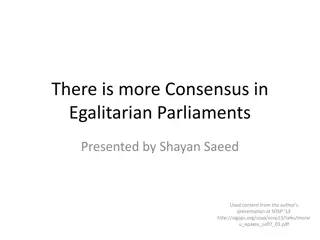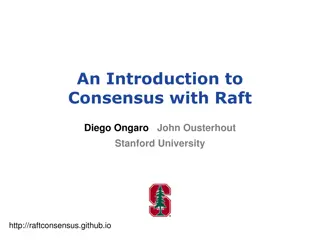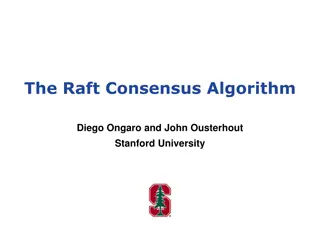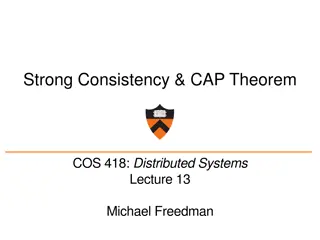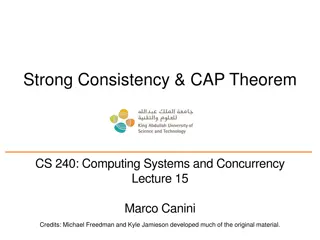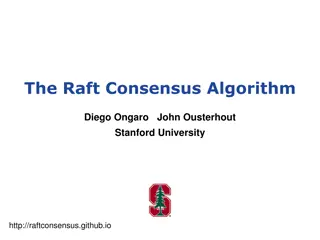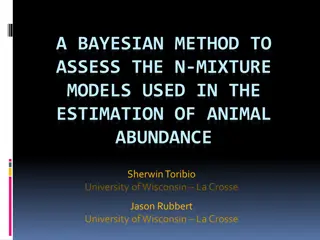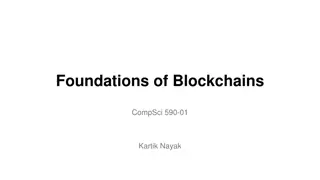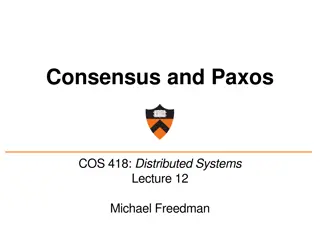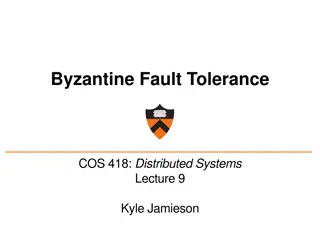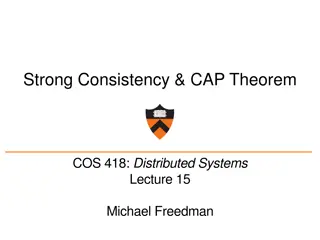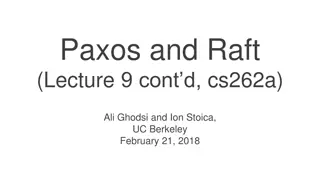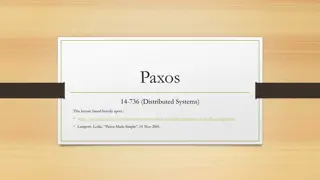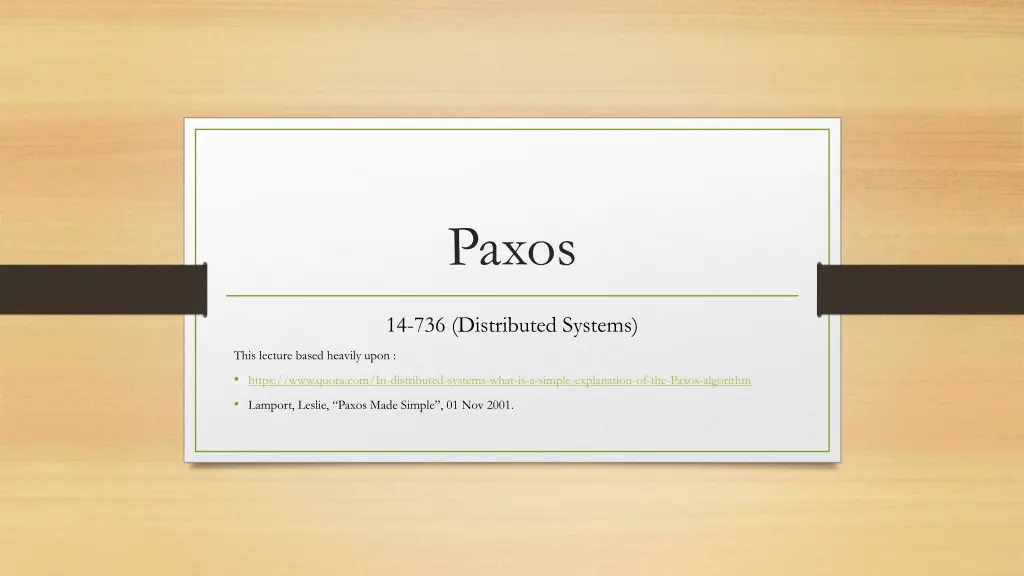
Understanding the Paxos Algorithm
Learn about the Paxos algorithm, a key concept in distributed systems that ensures consensus among processes by guaranteeing the agreement on a single proposal. Explore the safety requirements, goals, liveness, communication considerations, mechanism, and three essential phases of Paxos.
Download Presentation

Please find below an Image/Link to download the presentation.
The content on the website is provided AS IS for your information and personal use only. It may not be sold, licensed, or shared on other websites without obtaining consent from the author. If you encounter any issues during the download, it is possible that the publisher has removed the file from their server.
You are allowed to download the files provided on this website for personal or commercial use, subject to the condition that they are used lawfully. All files are the property of their respective owners.
The content on the website is provided AS IS for your information and personal use only. It may not be sold, licensed, or shared on other websites without obtaining consent from the author.
E N D
Presentation Transcript
Paxos 14-736 (Distributed Systems) This lecture based heavily upon : https://www.quora.com/In-distributed-systems-what-is-a-simple-explanation-of-the-Paxos-algorithm Lamport, Leslie, Paxos Made Simple , 01 Nov 2001.
Consensus A collection of process can propose values. A consensus algorithm ensures That a single proposal is chosen The processes can learn the proposed value No value is chosen if there are no proposals.
Consensus Safety Requirements Only a value that has been proposed may be chosen Only a single value is chosen, and A process never learns that a value has been chosen unless it has been
Goal, Simply Put The goal of the Paxos algorithm is for some number of peers to reach agreement on a value. Paxos guarantees that if one peer believes some value has been agreed upon by a majority, the majority will never agree on a different value.
Liveness, By Intuition A proposed value is eventually chosen Once a value is chosen, the processes eventually learn it
Communication Agents operate at arbitrary speed Agents may fail by stopping and then be restarted Unless some information can be remembered across restart, consensus isn t possible
Mechanism The protocol is designed so that any agreement must go through a majority of nodes. Any future attempts at agreement, if successful must also go through at least one of those nodes. Thus: Any node that proposes after a decision has been reached must communicate with a node in the majority. The protocol guarantees that it will learn the previously agreed upon value from that majority.
Three Phases Prepare Accept Decided
Prepare Phase: Prepare and Promise First, we have the prepare phase. A sends a prepare request to A, B and C. Paxos relies on sequence numbers to achieve its guarantees. The prepare request asks a node to promise: "I will never accept any proposal with a sequence number less than that in the prepare request." The nodes reply with any value they have previously agreed to (if any). Node A must propose the value it receives with the highest sequence number. This action provides the guarantee the previously agreed upon values will be preserved.
Accept Phase A sends an accept request to A, B and C. The accept request states: "Do you accept foo?" If the accompanying sequence number is not below the what the node had previously promised or request the node has previously accepted, it will accept the new value and sequence number. If node A receives accepts from a majority of nodes, the value is decided. This round of Paxos will never agree to another value
Decided/Accepted Phase The third phase is not strictly necessary, but is a crucial optimization in any productionized Paxos implementation. After A receives a majority of accepts, it sends decided messages to A, B and C. These messages let all the peers know that a value has been chosen, and accelerate the end of the decision process. Without this message, the other peers would have to attempt to propose a value to learn of the agreement. In the prepare phase, they'd learn of the previously agreed upon value. Once that agreement was driven to conclusion, the node would recognize the agreement.
Paxos Message Flow https://en.wikipedia.org/wiki/Paxos_(computer_science)
Message Flow: Failure of Acceptor https://en.wikipedia.org/wiki/Paxos_(computer_science)
Message Flow: Failure of Redundant Learner https://en.wikipedia.org/wiki/Paxos_(computer_science)
Message Flow: Failure of Proposer https://en.wikipedia.org/wiki/Paxos_(computer_science)
Multi-Paxos If leader is stable, no need for Prepare phase Include round number included in proposal. Incremented with each proposal from same leader. https://en.wikipedia.org/wiki/Paxos_(computer_science)


